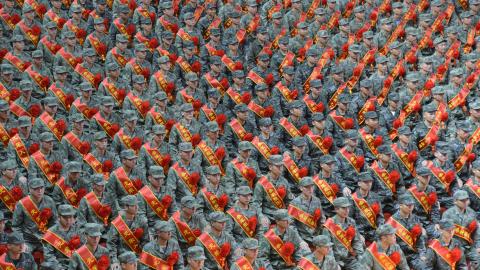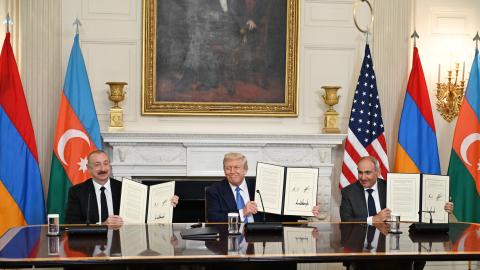Last week's U.S. military "scandal": Some young enlisted men from a platoon in the 82nd Airborne, most barely old enough to vote, posed for photos in 2010 with the remains of Afghan suicide bombers.
In some of the photos, Afghan National Police officers posed alongside U.S. troops. This group has taken the heaviest losses from suicide attacks. No American in the photos committed any atrocity or required subsequent military discipline. In fact, according to Col. Dave Oclander, who commanded the battalion that included the platoon in question, this unit was one of his best, and many of the men in the photos had performed acts of humanitarian service while deployed.
Military investigators have found that the men might have violated General Order No. 1, intended to "identify and regulate conduct which is prejudicial to good conduct and discipline of forces." Section 2f prohibits photography of "human casualties."
No one had published the photos anywhere until last week, when the good people at the Los Angeles Times decided that the world would be best served by doing so. The Pentagon had requested that the newspaper refrain since some of the men in the photos are currently deployed in Afghanistan.
By now, every bien-pensant commentator has weighed in with self-righteous indignation at this manufactured story. It symbolizes a breakdown in command, the effects of overly long and frequent overseas deployments. And somehow, although it took place two years earlier and under different senior leadership, it is of a piece with last month's alleged shooting spree by Staff Sgt. Robert Bales.
In polite circles today--meaning circles in which few people under 60 have served in uniform--the American military is seen through distorted lenses. One lens exaggerates the good characteristics of those who serve, making even the most indifferent truck mechanic or supply-chain manager a "hero." This does little for the real heroes, who have received less recognition in our Afghan and Iraq engagements than in any previous war. The other lens, measuring ordinary men and women against this impossible standard, labels every ordinary lapse of judgment as a grave indicator of the failure of a chain of command, a moral blemish, and a comfort to our enemies.
These young men should never have taken those photos. But that is the extent of their "crime."
Was the picture-posing culturally insensitive? Probably less so in Afghanistan than it would have been here. Afghans themselves have often denied Islamic burial to suicide bombers. When I was embedded with U.S. troops in Khost province several years ago, the Afghan governor allowed one bomber's body parts to be left in tree branches as a deterrent to others. The Afghan National Police--who lost 1,555 men between mid-2010 and mid-2011, according to figures reported by the Washington Post, most to improvised explosive devices and suicide attacks--hate suicide bombers as no one else does.
Afghan civilians mainly feel the same way. Like the police, they don't drive around in armored vehicles that can withstand bomb blasts. In 2011, according to United Nations figures, the Taliban killed about 2,600 civilians, 431 in suicide bombings. Just about the only Afghan to get on his high horse about the publication of the photos was the feckless president, Hamid Karzai.
Part of the issue here is also the accelerating feminization of American culture, which has caused the increasing demonization of relatively normal male behavior. Men at war demonize their enemy and enact their triumph over him symbolically. That is part of the psychology that makes them able to kill.
No, it isn't pretty, but it's not that different from the way football teams psych themselves up for games or the way that (with less physicality) a big company's sales force revs up for a new product introduction. Male aggressivity serves a purpose in a healthy society--as many of us realized for the first time when the U.S. had to fight back after 9/11.
And sometimes, men do dumb things. This is one of them, and not much more.
















